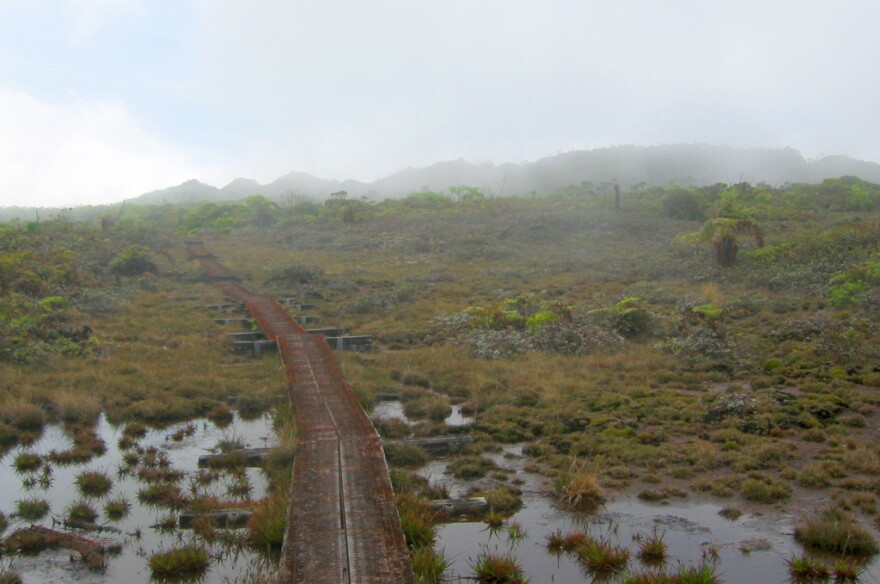Kauai’s Kokee State Park is home to the Alaka‘i Wilderness Preserve. At an elevation of one mile, it’s the world’s highest rainforest swamp. It’s also home to numerous endangered species as well as haunting and majestic vistas for visitors. A boardwalk was built back in the ‘90s both to protect the rare plants and animals and also for hiker safety. But that boardwalk is no longer what it used to be. HPR contributing reporter Scott Giarman has more from Kaua‘i.
Alakai Swamp’s boardwalk was built 20 years ago of sturdy redwood reinforced with chicken wire. But we all know how quickly things deteriorate in Hawaii. Time in the world’s wettest environment has taken its toll on the boardwalk and it is no longer in good shape. In fact, large sections of it are decaying. “There’s some places where portions of the boardwalk dip down into the mud,” said DLNR spokesman Dan Dennison. That’s not good. A step off the boardwalk could leave a hiker waist-deep in the swamp’s exotic ooze. Of even greater concern to environmentalists is the potential damage that could be done by wayward feet to the rare creatures that call Alakai home.
In response, DLNR’s Division of Forestry & Wildlife Na Ala Hele Trail Access program will be spending five hundred twenty nine thousand dollars to replace the wooden boardwalk with recycled plastic and fiberglass boards – similar to those used in lanais – that should be more stable and last much longer than wood. The work started last month, but no completion date is certain since work will only be done when the Swamp’s unpredictable conditions are favorable.
Alakai Swamp Trail is 3½ miles each way. DLNR’s plan is to replace the boardwalk in 3 of these miles.
The Alakai Swamp’s unique environment in a remote and untouched location makes it the last refuge for numerous endangered Hawaiian plants and birds as well as the ope apea, the rare Hawaiian bat.




